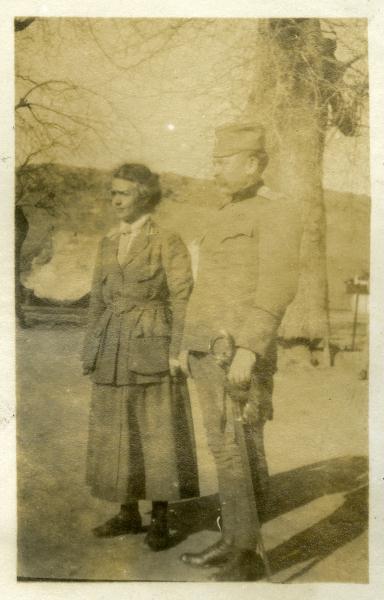A Geelong woman’s remarkable journey through war in Europe to establishing Geelong’s first maternity ward is revealed in a new book.
Dr Ruth Lee’s novel tells how Mary De Garis lost her husband in World War One and saved injured soldiers amid bombing on the Balkan Front before delivering thousands of Geelong babies until the age of 79.
Dr Lee launched Woman War Doctor, The Life of Mary De Garis this week with the help of Deakin University Vice Chancellor Jane Den Hollander and Professor Barry Jones.
Dr Lee said women entering Geelong Hospital to have babies could thank the pioneering spirit of Dr De Garis.
“Dr De Garis is remarkable because her story is so unknown,” explained Dr Lee.
“Her contribution to the Australian/allied war effort is not recognised in the Australian War Memorial and similarly her contribution to women’s health has gone unrecognised by historians.”
Born in 1881 at Charleton, Dr De Garis graduated from University of Melbourne in 1905 with a medical degree.
“Her life was extraordinary,” Dr Lee said.
“She went straight to the outback to work because it was the only way she could get experience.
“Dr De Garis volunteered to join the Australian army at the start of World War One but was refused, so she travelled independently to the UK to help the war effort there but also to be on hand for her fiancé should he get injured.
“He survived Gallipoli but was killed on the Western Front, so Dr De Garis joined the Scottish Women’s Hospitals, (which) established 14 medical units, all staffed by women, that served in Corsica, France, Macedonia, Russia, Salonika and Serbia.”
Dr De Garis served as chief medical officer of a 200-bed tent hospital in northern Macedonia during the war.
“She was absolutely fearless, operating on wounded soldiers while bombs were dropping,” Dr Lee said.
Dr De Garis continued her work in health after the war.
“In the 1920s, when Geelong Hospital was rebuilt, Dr De Garis agitated for a maternity ward to be built,” Dr Lee said.
“It took seven years of hard lobbying before the labour ward, as it was called then, was commissioned in 1931, as the administrators at the time didn’t see the need.
“Middle-class women gave birth in private maternity hospitals, while poor women called the midwife.”
Dr De Garis turned around Geelong’s high maternal mortality rate, delivering 1000 babies in the first seven years of the ward without losing a mother.
“Her life wouldn’t have been easy but she kept on going and kept working until she was 79,” Dr Lee said.
Dr De Garis was among the first wave of feminists who won recognition of women’s right to control their own bodies.
“Before the law recognised equality in marriage, husbands owned their wives’ bodies and their children,” Dr Lee said.
“The early feminists recognised that some women felt violated when they were being examined by medical men. The advent of women doctors improved life for women.”







